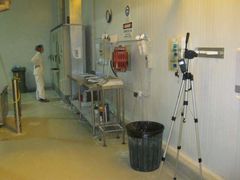Dust Testing
Dusts may be easily inhaled, ingested or enter though the skin depending on the size and toxicological nature of the dust. Below are some points which are taken into consideration for dust testing and monitoring.
Airborne Dust Testing
Dust particles may be generated through mechanical processes (blasting, grinding, sawing, drilling etc) or thermally generated (welding, molding, casting etc) and then suspended within the air. The suspended dust and fragments may then be breathed in potentially causing health effects. The potential health effect depends on:
- The toxicological health effects of the hazardous substance comprising the dust; and
- The size of the dust particles
The toxicology of the dust particles determines the size of the dust which requires testing. It is critical that an occupational hygienist undertake a walkthrough survey initially to identify potential toxic dusts and the processes undertaken which may release and expose dust through the site.
If the dust is a systemic toxin then all inhalable fractions of the test up to 100 microns in size are collected. The testing method for Inhalable dust is AS 3640 Workplace atmospheres – Method for sampling and gravimetric determination of inhalable dust.
For dusts that may cause pneumoconiosis or where the inner part of the lung is affected then only the respirable fraction, dusts less than 16 microns in size are collected. The testing method for Respirable Dust is AS 2985 Workplace atmospheres – Method for sampling and gravimetric determination of respirable dust.
Sampling for Dust Testing
The placement of the dust testing equipment is critical to the overall sampling strategy and interpretation of results. Dust testing can be sampled using:
- Personal dust testing
- Static dust testing
Personal dust sampling attaches the air monitoring equipment to the worker with the sampling device within the breathing zone to estimate the exposure. The exposure is then compared against the
Static dust testing is collected using air monitoring equipment to assess the concentration of dust released into the air by processes or to assess the effectiveness of controls such as local exhaust ventilation (LEV).
Settled Dust Testing
Dust testing where the particles have fallen out of suspension from the air will deposit on surfaces. There is then a potential for the hazardous dust to enter through secondary processes such as sweeping dust into the air, vacuuming or touching surfaces. Significant exposure from dust containing systemic toxins such as lead can arise.
A swab of the dust is generally taken over a measured area and tested to determine the concentration. This can then assist in providing a health assessment and potential exposures, given the nature of the activity being undertaken on the site.

